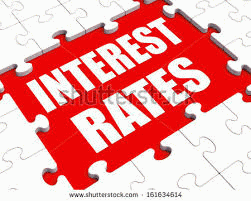Cross-posted from Paul Craig Roberts
Co-written by *Dave Kranzler
One of the biggest puzzles in the financial markets this year has been the considerable fall in interest rates despite the Fed's program of tapering or cutting back the Fed's bond purchases known as Quantitative Easing. A year ago, when Fed Chairman Bernanke announced the possibility of tapering QE on May 22, 2013, the 10-year Treasury yield was 2.03%. The yield quickly moved up close to 3% after Bernanke's taper comments, forcing the Fed to retract or "clarify" them. Since January 2014, however, when the Fed actually began tapering, the 10-year yield has steadily declined from over 3% to it's current yield of just over 2.5%.
The puzzle is: why did a mere mention of tapering send interest rates up while actual tapering sent them down?
The Fed's stated goal for QE back in late 2008 was to stimulate an economic recovery by forcing down interest rates with bond purchases. If the Fed reduced its bond purchases this year because QE succeeded in improving the economy, interest rates should be rising as companies and consumers bid for loans. Rising interest rates are one of the primary indicators of an improving economy.
How to explain this anomaly?
Perhaps the answer is that QE did not stimulate the economy and that realization of this fact among more savvy investors is resulting in money moving out of the more risky stocks into the relatively safety of Treasuries.
Most of the $3.47 trillion in new money that the Fed has created since December 2008 did not find its way into the economy. Instead, 73% -- $2.53 trillion -- of the new money is sitting on the balance sheets of the big banks, earning interest being paid by the Fed in the banks' Excess Reserves (free cash) account at the Fed.
Excess reserves are the amount of cash held by banks at the Fed which are greater than the amount of required reserves (required reserves are the cash and cash-equivalent securities held as reserves against bank liabilities).
It looks like the true purpose of QE was to shore up the banks, and that tapering began in order to shore up the dollar.
Prices of debt instruments tend to move in the same direction. By pushing up bond prices, the Fed's purchases raised the prices of the debt-related derivatives on the banks' balance sheets, making the banks appear more solvent. After years of QE, the banks have $2.53 trillion in excess cash, on which they are earning interest, as a cushion.
Just as important to the Fed's goal of injecting a massive amount of liquidity onto the big bank balance sheets, the Fed also wanted to stimulate the perception of an improving U.S. economy. It achieved this goal by forcing interest rates to such a low level that it triggered a large movement of capital out of the bond market and into the stock market as investors chased higher rates of return. The inexorable rise in the stock market, despite deteriorating economic fundamentals and all-time high stock price-earnings ratios, sends the "message" that the U.S. economy is improving.
In what will end up being even more problematic for our system, by forcing interest rates to an unnaturally low level, the Fed triggered an enormous movement out of lower yielding relatively risk-free assets like high grade corporate bonds and Treasuries and into much riskier -- but higher yielding -- junk bonds and other low-grade fixed income investments. This is turning out to be an exact repeat of risk-taking, casino-bet style of investing that culminated with the 2008 financial crisis.
With the first revised estimate of the first quarter U.S. GDP now lowered from an initial 0.1% rise to a 1.0% decline, it is now apparent that the Fed's stated goal of QE to stimulate the economy has failed.
Wall Street and the presstitute financial media insist on blaming the relentless rise in Treasury bond prices -- and the concomitant decline in interest rates -- on a "short squeeze" in the Treasury market. This is the cover story in order to deflect scrutiny from the real reason for the decline in interest rates despite the Fed's reduction in bond purchases.
(Note: You can view every article as one long page if you sign up as an Advocate Member, or higher).






